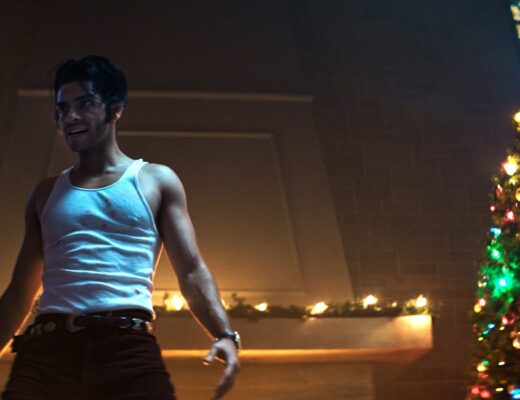Unstuck in Time offers intimate portraiture of its subject without ever resorting to apologia or hagiography.
In 1982, a young Robert B. Weide wrote to his literary idol with a proposal for a documentary. Twenty-five years later, the writer Kurt Vonnegut died as the result of a head injury — he was 84 years old, and, following a traumatic career in the U.S. Army during World War II, spent 50 years writing, eventually becoming one of the most ubiquitous names in American literature. So it goes. In the decades between these events, Weide and Vonnegut developed a deep and unusual friendship that eventually became woven into the fabric of both artists’ work, and resulted in Weide’s long-awaited documentary, Kurt Vonnegut: Unstuck in Time.
The documentary proceeds in mostly linear fashion, following Vonnegut’s childhood, his time at war, and his writing career, and were it not for Weide’s presence and phenomenal access, the film would probably have not been any more remarkable than a simple A-to-B biography. Weide himself even bemoans the cliché of the filmmaker who becomes a part of his own documentary, but here it is an inextricable component, as instrumental to the film as Vonnegut himself, and doesn’t come across as even vaguely gimmicky. Weide, as the fanboy turned friend, becomes the emotional core of the film, and his adoration of Vonnegut is deeply felt. Weide’s unprecedented level of access provides the film with an intimate look at Vonnegut, delving into both his public face and the very real grief and trauma behind that self-image. The film isn’t limited to mere speculation, with stark moments of contrast taking center stage — one particularly affecting pairing is the laughing, morbid Vonnegut joking about the ignoble deaths of his wartime comrades in opposition to the author solemnly discussing the death of his beloved sister, all sense of dark humor vanished. It’s a tension that inhabits Vonnegut’s work, and Weide reflects it perfectly, probing behind the curtain into the source of his iconic satirical sensibility.
Despite Weide’s valid concerns over the friendship intruding on the film, it is exactly this tension that keeps the documentary riveting. Weide leans into the tension, refusing to separate the art from the artist both narratively and visually, stylishly combining Vonnegut’s illustrations with intimate home videos, and carefully examining the coexistence of Vonnegut’s personal and creative lives. Given his intense personal relationship with his subject, it’s a testament to Weide’s artistic integrity that Unstuck in Time remains so impartial, treating its subject with empathy and compassion, but never indulgence. The film is equally as comfortable admitting that Vonnegut was often an absent or intimidating father figure as it is venerating his artistic genius and the love and fondness with which his children remember him. As a portrait, Unstuck in Time is unafraid to be whole, and despite the film’s intense personal inflection, never serves as apologia for an undeniably complicated man.
Originally published as part of DOC NYC 2021 — Dispatch 2.
Published as part of Before We Vanish | November 2021.







